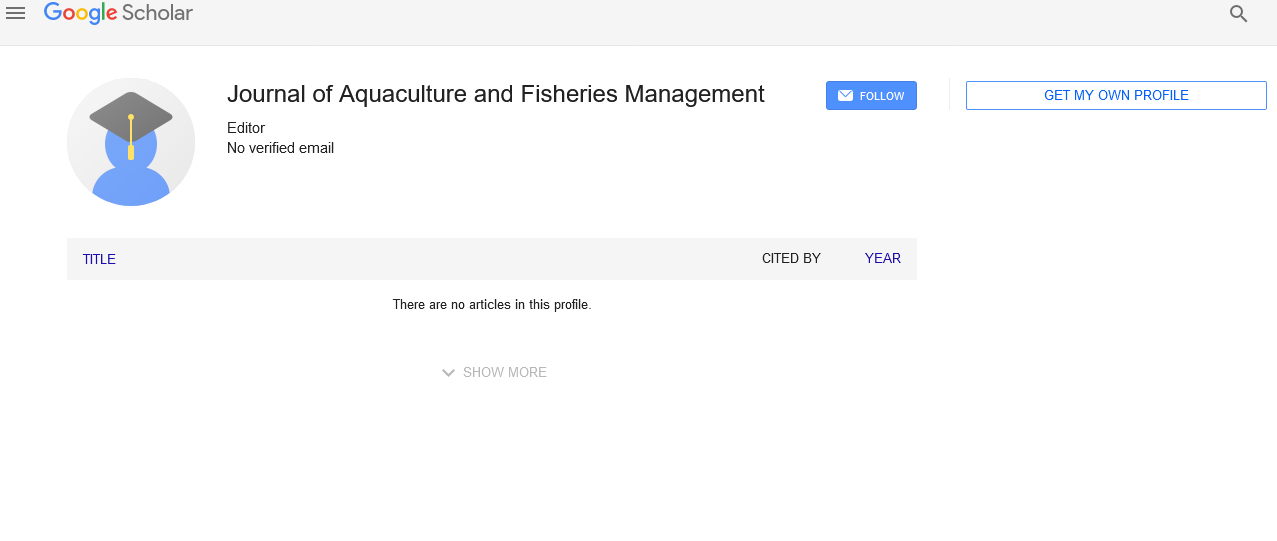How do we triumph over the abrupt degradation of marine ecosystems?
Received: 05-Dec-2021 Accepted Date: Dec 18, 2021; Published: 28-Dec-2021
This open-access article is distributed under the terms of the Creative Commons Attribution Non-Commercial License (CC BY-NC) (http://creativecommons.org/licenses/by-nc/4.0/), which permits reuse, distribution and reproduction of the article, provided that the original work is properly cited and the reuse is restricted to noncommercial purposes. For commercial reuse, contact reprints@pulsus.com
Description
An insatiable public call for sustainable electricity has induced power technology stakeholders to explore alternative sources of inexperienced electricity together with harnessing offshore strength inside the ‘blue economy’ [1]. Harnessing wind and wave power represent the number one sources of offshore energy however other assets encompass: tidal streams thermal gradient [2]; and salinity gradient as an instance, the European Union (EU) has constructed off-shore wind electricity infrastructures with the ability to generate 22,072 MW of strength with the United Kingdom, Germany and Denmark main inside the general hooked up ability. Inside UK waters, circa 38 operational offshore wind farms had been established to exploit decrease energy improvement costs on a large scale [3] the EU Wind Energy Association (EWEA) estimates that 20-forty GW of offshore wind strength functionality and capacity will be operating inside the EU by means of 2022. But, offshore wind infrastructure improvement, is extra complicated as compared to onshore equivalents given inherent complexity in engineering, construction and resource intake. Offshores trends additionally perform in turbulent and unpredictable ocean surroundings and are regularly positioned alongside the coast line in which sea water is usually shallow and suitable for biodiversity to flourish. Therefore, those initiatives substantially impact upon marine ecology during the construction and operational levels of the infrastructure's development.
International offshore wind
Globally, offshore wind farm improvement has elevated swiftly with an annual growth of over 25% [4] and further, the sector is expected to develop via as a minimum 25% by way of the 12 months 2030. This marketplace growth displays stakeholders' (i.e., authorities, electricity producers and strength distributors) endeavors to decrease industrial emissions and worldwide warming as delineated within the united country's Framework Conventions on climate exchange and the Paris settlement; where the latter strives to keep atmospheric temperature will increase underneath 2°C. To fulfill the Paris settlement, the diverse signatories have followed distinctive economic and political regulations aimed toward boosting the setup of off-shore wind and marine electricity initiatives. This has seen the range of initiatives boom through strategies such as the 0-subsidy bid added in Germany and the Netherlands.
Worldwide marine power
Conservative estimates of worldwide marine energy imply that there's an ability to increase 32 PWh/y in the offshore blue economic system. However, and regardless of the potential, a meager fraction of this capacity has been exploited with the worldwide marine electricity manufacturing being simplest 536 MW in 2016. Of the developed marine strength, South Korea has the biggest share with 254 MW from tidal power. Different feasible industrial plants are in Scotland, France, Sweden, China, US, Netherlands, and Ireland. Regions with the best potential to generate tidal electricity are the western coastlines of the Americas, Africa, Europe, New Zealand and Australia. Its miles expected that electricity technology from renewable marine resources will boom to twenty–50% of the ability by using 2050[5].
Intense warmth wave activities are now inflicting surroundings degradation across marine ecosystems. The outcomes of this warmness-precipitated damage variety from the speedy loss of habitat-forming organisms, to a discount inside the services that ecosystems assist, and in the end to impacts on human health and society. How we address the unexpected emergence of atmosphere-huge degradation has not but been addressed within the context of marine warmth waves. An examination of new marine warmth waves from around Australia points to the potential important position that respite or shelter from environmental extremes can play in enabling organismal survival. However, maximum ecological interventions are being devised with a goal of mid to late-century implementation, at which era some of the ecosystems, that the interventions are targeted in the direction of, may have already gone through repeated and massive heat wave brought on degradation. Here, our assessment of the deserves of proposed ecological interventions, across a spectrum of procedures, to counter marine environmental extremes, well-known shows a lack preparedness to counter the outcomes of intense conditions on marine ecosystems. The ecological have an impact on of these extremes are projected to preserve to effect marine ecosystems in the coming years, long before these interventions can be evolved. Our evaluation famous that processes which can be technologically ready and in all likelihood to be socially desirable are locally deployable only, whereas the ones that are scalable-as an instance to features as massive as principal reef systems-aren't near being testable, and are not likely to gain social license for deployment. Understanding of the environmental timescales for survival of extremes, via respite or safe haven, inferred from discipline observations will help take a look at such intervention equipment. The growing frequency of excessive occasions consisting of marine heat waves will increase the urgency to recollect mitigation and intervention gear that guide organismal and atmosphere survival in the immediate future, while global weather mitigation and/or intervention are formulated.
The growing demand for international electricity has resulted within the development of renewable offshore electricity to mitigate concerns for worldwide warming and environmental sustainability. Further to wind and waves, there are different resources of renewable marine strength being explored including tidal streams, thermal gradient and salinity gradient. The aim of this look at turned into to undertake a complete scientometric assessment of cutting-edge research on the effects of renewable offshore strength development on marine species to become aware of traits and studies recognition. It’s been cited that offshore wind farm electricity has grown to be the most famous source of offshore renewable strength with an annual growth of over 25%. The studies followed concerned a scientometric analysis to evaluate the available literature on the subject the use of the Scopus database.





